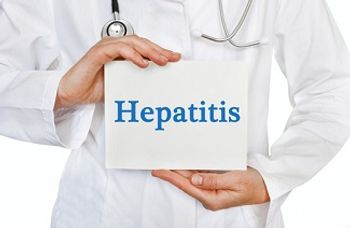
Preclinical Trial of TDF Vaginal Ring for PrEP Ends Early
Research on a tenofovir disoproxil fumarate intravaginal ring for PrEP hit a hurdle when 8 of 12 women unexpectedly developed vaginal ulcers.
A preclinical trial of a tenofovir disoproxil fumarate (TDF) intravaginal ring for HIV pre-exposure prophylaxis ended early after 8 of 12 women unexpectedly developed vaginal ulcers.
The National Institutes of Health-funded study, published in
The study came after preclinical macaque models and a small 2-week phase 1 clinical trial in which the vaginal ring was shown to be safe.
“The mechanisms by which the drug ring (and not the placebo ring) led to this unanticipated finding are not yet fully understood,” corresponding author Betsy Herold, MD, director of the Translational Prevention Research Center at Albert Einstein College of Medicine, told Contagion®. “We did observe increases in inflammatory markers in women using the TDF compared [with] placebo ring by examining, for example, gene expression in biopsy tissue. The findings suggest that sustained levels of intracellular TFV-diphosphate (the active form of the drug in cells) and/or other metabolites released by the TDF but not placebo ring induce inflammation and may disrupt epithelial repair, which in the setting of microabrasions associated with ring use and/or sex, may predispose to ulceration. The ulcers were NOT predicted by the preclinical or earlier 2-week clinical study.”
All ulcers resolved after the rings were removed. Only 2 participants in the TDF group completed the 3-month study with continuous ring use and monthly ring changes. Ulcers were detected an average of 32 days after TDF ring use began, with 8 participants discontinuing use early as a result. Rings were electively removed from the other 2 participants in the TDF group at 20 and 23 days.
“Because other products that deliver related drugs (tenofovir itself or another prodrug called tenofovir alafenamide) are in preclinical or clinical trials, it is critical that we determine the mechanism by which this TDF ring led to this unexpected outcome as it has implications for these other products,” Herold told Contagion®. “We are currently conducting intensive safety studies in other animal models including sheep to try and identify the precise mechanisms.”
Women in the TDF group had a 5- to 15-fold increase in cytokines or chemokines detected in the cervicovaginal fluid samples. Although the reason for the unexpected results is unknown, differences between this study and earlier studies include the patient population and duration of the study. The previous, 14-day trial involved sexually abstinent women, whereas this 3-month study recruited sexually active women, suggesting the possibility of micro-abrasions playing a role. Drug concentration seems an unlikely factor, according to the study, because tenofovir concentrations in fluid and tissue samples were similar in both studies.
“[Although] the results of this particular ring study were disappointing, it is important to emphasize that lessons learned will help us in developing other products,” Herold told Contagion®. “For example, the results highlight the need to readdress the current preclinical models of safety, which did not predict the outcome of this trial. There is an unmet need for safe and effective PrEP for women that address some of the challenges with adherence and rings have the potential to meet that need. Thus, more research is needed.”
Earlier this year, the HOPE (HIV Open-label Prevention Extension [MTN-025]) phase 3 trial showed
Developing alternative methods of delivering PrEP has been a focus among investigators hoping to increase adherence to the medication, which is most commonly administered as a daily pill. According to a
Newsletter
Stay ahead of emerging infectious disease threats with expert insights and breaking research. Subscribe now to get updates delivered straight to your inbox.

















































































































































































































































































